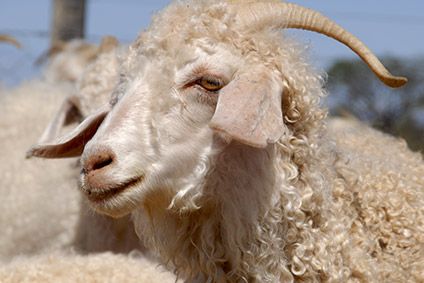
Textile Exchange has launched a new Responsible Mohair Standard (RMS), which verifies and identifies that the fibre is produced in farming systems that respect animal welfare and the environment.
The standard is being launched alongside the first revision to the Responsible Wool Standard (RWS), originally released by the non-profit industry group in 2016. It applies a “strong assurance system” to perform regular audits of the farms and to track the material to the final product.
The RMS is designed to ensure that animal welfare outcomes are delivered, and that the Angora goats from which the fibre is derived are humanely treated, healthy and well cared for.
“The RMS helps everyone to identify room for improvement on their farms and in their business,” says Marx Strydom, mohair producer from the Jansenville region of South Africa. “It also helps to provide farmers some peace of mind as to where they are up to standard, and even reassures them of areas where they excel. The idea that everyone’s facilities and practices need to adhere to a minimum standard is an outstanding idea.”
The Responsible Mohair Standard is based on, and closely aligned with, the Responsible Wool Standard and the two standards are combined for the supply chain. Both are structured around the Textile Exchange Animal Welfare Framework, which sets out the principles and expectations that guide and connect Textile Exchange’s animal welfare standards.
The RWS has seen strong adoption across the supply chain with certified farms in all key wool producing countries. The revision covers updates and clarifications to the animal welfare and land management modules, including the introduction of additional requirements and guidance around biodiversity. It also introduces a set of social welfare requirements.

US Tariffs are shifting - will you react or anticipate?
Don’t let policy changes catch you off guard. Stay proactive with real-time data and expert analysis.
By GlobalDataGiovanni Schneider, CEO of wool processor The Schneider Group, adds: “We believe the Responsible Wool Standard is addressing a specific market need. It is our task, as a trusted partner between producers and consumers all over the world, to convey this message to all our precious suppliers.”
The goals of the Responsible Mohair and the Responsible Wool Standards are to provide the industry with the best possible tool to:
- Recognise the best practices of farmers.
- Ensure that wool and mohair come from farms with a progressive approach to managing their land, and from sheep and goat that have been treated responsibly.
- Create an industry benchmark that will drive improvements in animal care and land management and social welfare where needed.
- Provide a robust chain of custody system from farm to final product.




